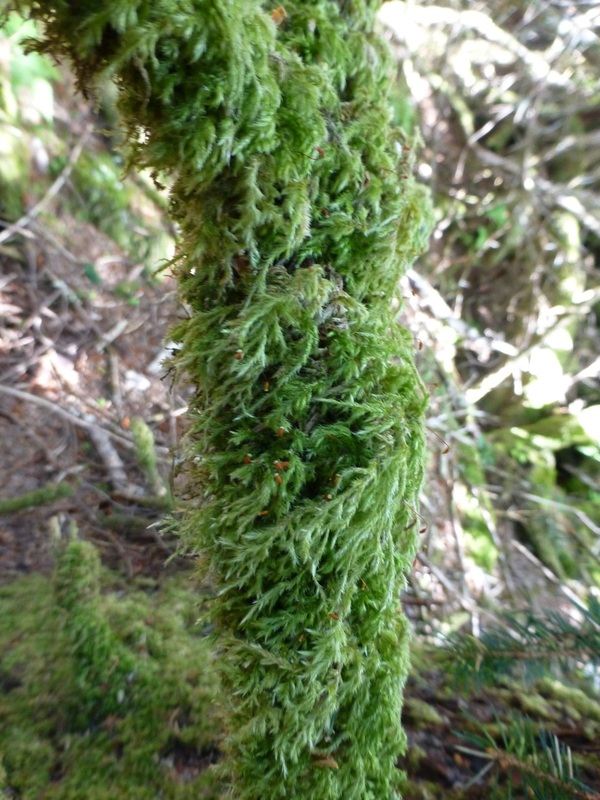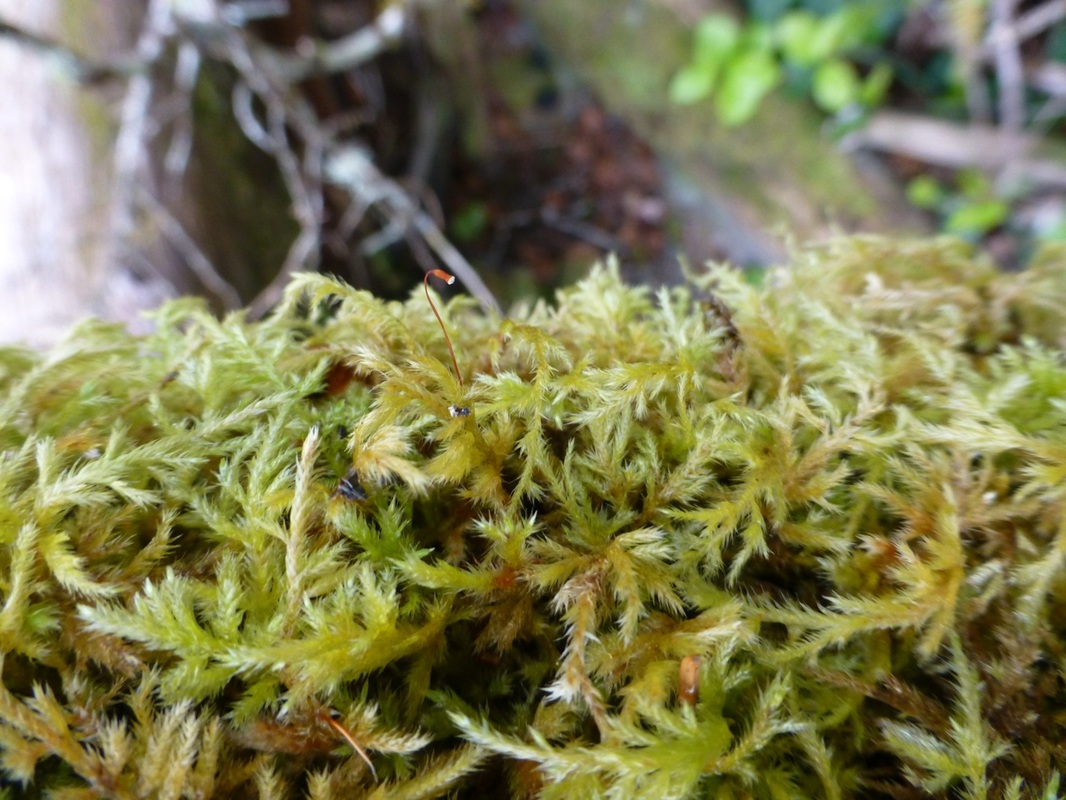Cat-tail moss • Isothecium myosuroides, I. stoloniferum, I. spiculiferum.
Identification
Cat-tail moss is a glossy whitish-green to pale brownish-green species, with long irregularly-branched and narrowly-tapered strands. Its leaves are elliptical and sharply-pointed, with a well-developed midrib. The sporophytes are common and have brownish stalks. This species is quite variable in branching and growth patterns, depending on where it is growing. Click here for a detailed identification resource.
Habitat & Range
Cat-tail moss is a common species (described as 'dirt common') in coastal rainforests, where it hangs in curtains from branches and forms mats on tree trunks, decomposing logs, and rocks. It grows from low to middle elevations. Its is found along the west coast of North America from Alaska to California, as well as coastlines in Northern Europe including the United Kingdom. It also occurs in some areas of the North American east coast.
Similar Species
Coiled-leaf moss (Hypnum circinale) is similar in colour and growth patterns, however its leaves are strongly curved and lack a midrib.
Cat-tail moss is a glossy whitish-green to pale brownish-green species, with long irregularly-branched and narrowly-tapered strands. Its leaves are elliptical and sharply-pointed, with a well-developed midrib. The sporophytes are common and have brownish stalks. This species is quite variable in branching and growth patterns, depending on where it is growing. Click here for a detailed identification resource.
Habitat & Range
Cat-tail moss is a common species (described as 'dirt common') in coastal rainforests, where it hangs in curtains from branches and forms mats on tree trunks, decomposing logs, and rocks. It grows from low to middle elevations. Its is found along the west coast of North America from Alaska to California, as well as coastlines in Northern Europe including the United Kingdom. It also occurs in some areas of the North American east coast.
Similar Species
Coiled-leaf moss (Hypnum circinale) is similar in colour and growth patterns, however its leaves are strongly curved and lack a midrib.
References
Isothecium myosuroides Bridel [Brachytheciaceae]. California Moss eFlora. University Herbarium, University of California, Berekely. Accessed 08/09/2014.
Pojar, J. and MacKinnon, A. (1994). Plants of Coastal British Columbia. Vancouver, BC: Lone Pine Publishing. P. 468.
Vitt, D. H., Marsh, J. E., and Bovey, R. B. (1988). Mosses Lichens & Ferns of Northwest North America. Vancouver, BC: Lone Pine Publishing. P. 94.
Authors and editors of page
Kelly Fretwell, Ian Cruickshank, and Brian Starzomski (2014).
Isothecium myosuroides Bridel [Brachytheciaceae]. California Moss eFlora. University Herbarium, University of California, Berekely. Accessed 08/09/2014.
Pojar, J. and MacKinnon, A. (1994). Plants of Coastal British Columbia. Vancouver, BC: Lone Pine Publishing. P. 468.
Vitt, D. H., Marsh, J. E., and Bovey, R. B. (1988). Mosses Lichens & Ferns of Northwest North America. Vancouver, BC: Lone Pine Publishing. P. 94.
Authors and editors of page
Kelly Fretwell, Ian Cruickshank, and Brian Starzomski (2014).





